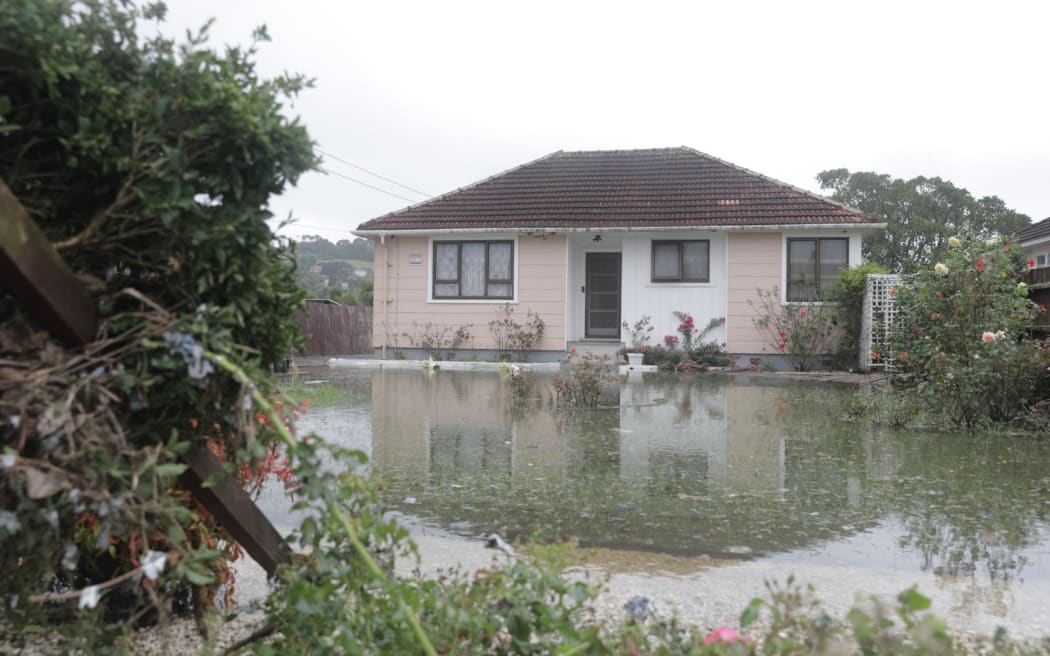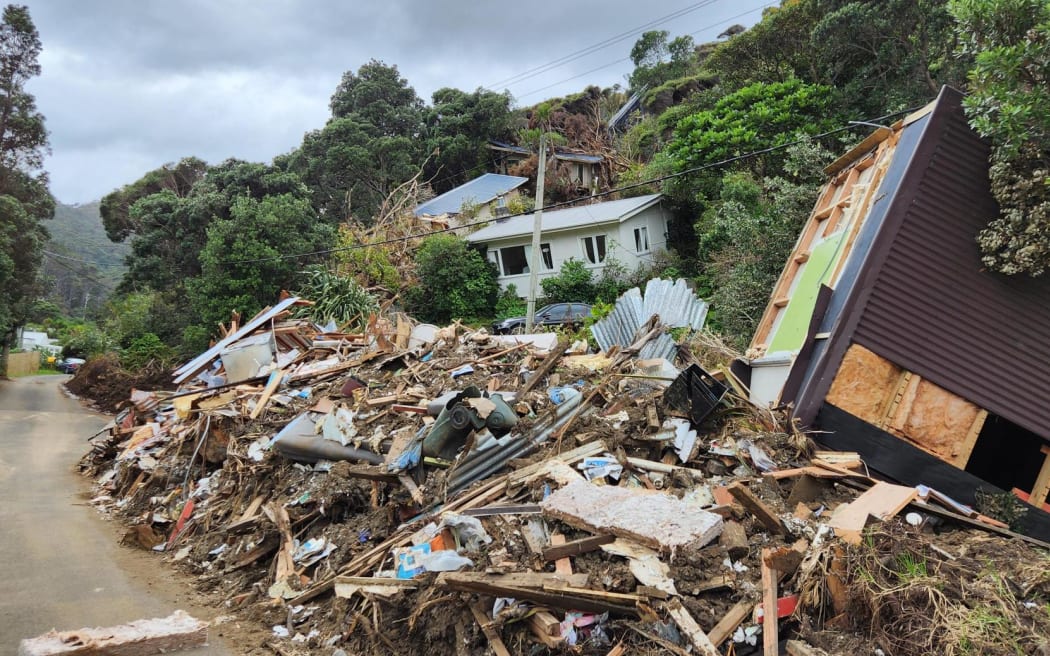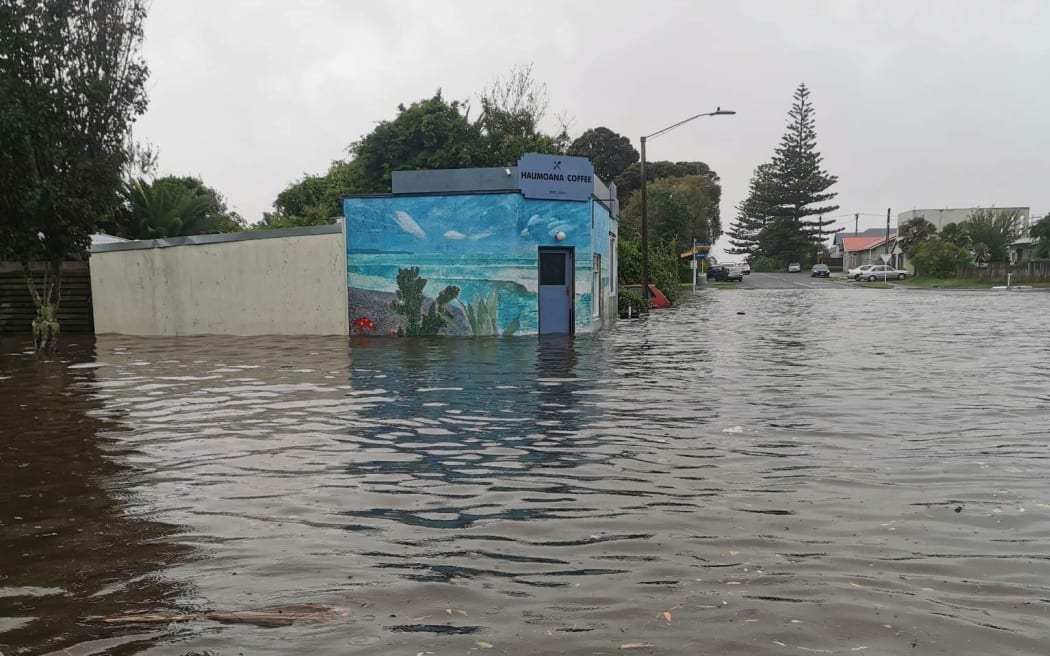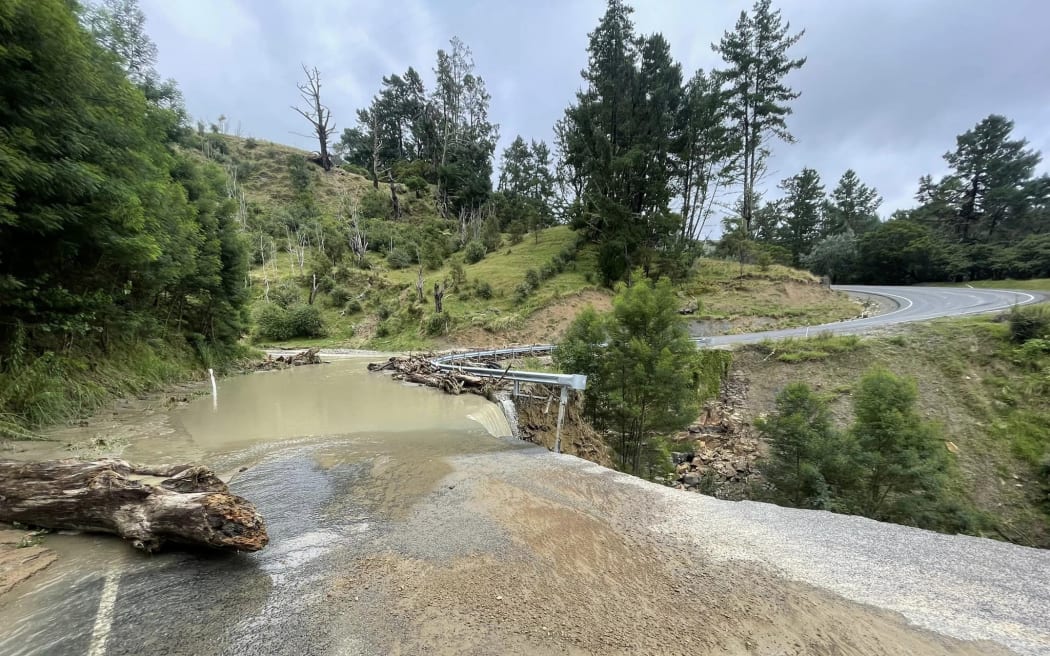‘Significant shortcomings’ in NZ’s emergency management system – inquiry

New Zealand’s emergency management system has failed in places and is not fit for purpose, an inquiry into the response to last year’s catastrophic North Island storms has found.
The inquiry – chaired by former Governor-General Sir Jerry Mateparae – found the country is not ready to respond to large-scale emergencies.
The report was released on Tuesday and found that in some places the system failed completely, and it did not enable people to properly prepare or respond to the disaster around them.
Public warnings and communication were non-existent or insufficient, and the capability and capacity of civil defence staff and infrastructure was overestimated or lacking.
Communities told the inquiry they felt completely let down by Civil Defence.
The inquiry makes 14 recommendations, including creating a warning system for natural disasters, building up the capability and capacity of civil defence staff, and including iwi Māori, businesses and locals in disaster planning.

What sparked the review
The inquiry looked into the response to the North Island weather events – the Auckland Anniversary floods, Cyclone Hale and Cyclone Gabrielle.
Across those emergencies, 15 people died, and one person remains missing.
Homes, businesses, and infrastructure were destroyed, and Treasury estimated the damage cost between $9 billion and $14.5 billion.

Key takeaways
The report can be summed up in one key sentence:
“Many communities and CDEM [Civil Defence Emergency Management] agencies were not adequately prepared, communication and warnings were non-existent or insufficient, and the capability and capacity of people and infrastructure was overestimated or lacking.”
The report also says that even if fully implemented, the recommendations alone will not result in a fit-for-purpose emergency management system.
“Without adequate investment in risk reduction and readiness, the impacts of disasters will continue to be devastating.”
But there is a bright spot – the report stresses that everyone involved in the responses had the best of intentions, and that communities “courageously supported each other” during the unfolding crises.
The inquiry conducted more than 200 interviews, and the public also gave submissions.

Emergency management system not fit for purpose
The inquiry found “significant shortcomings” in the way the system functioned.
“It does not have the capacity or capability to deal with significant, widespread events that impact multiple regions at once.”
The effectiveness of the response varied region to region.
“In some places, warnings were received too late or not at all, Civil Defence centres were not set up fast enough or did not meet the needs of communities, there was a lack of coordination between key organisations, and communication and decision-making was slow or non-existent.”
The shortfalls were down to a number of underlying issues:
- a lack of focus on and investment in readiness planning, activities, equipment, and supplies
- limited emergency management experience, capacity, and capability, including experience managing large-scale events
- councils not prioritising emergency management as a core function
- a lack of shared situational awareness across councils, National Emergency Management Agency (NEMA), and emergency responders
- communities and key organisations not being involved in planning activities
- an ad-hoc approach to bringing in expertise from around the country, and
- a significant mismatch between community expectations about what the emergency management response should offer and what it is able to deliver

Changes needed at NEMA
The inquiry noted NEMA is a small agency that “does not have the funding or expertise to undertake the full breadth of activities it is currently tasked with”.
The agency would operate more effectively if it focused on leading readiness and response activities – including setting standards, training, and leading worst-case scenario planning.
Leadership for risk reduction and recovery should sit elsewhere, it said.
A major disconnect
The disconnect between communities and Civil Defence was described as “striking”.
Civil Defence agencies told the inquiry they considered communities to be part of the civil defence system, relying on them to respond immediately while the official response was stood up. But communities were not aware of that.
“Most had no local community plans to put into action and, for those that did, there was a lack of worst-case scenario planning.”
Those who stepped up did so because they saw a need – not because they thought they were part of a formal response.
“The response relied heavily on the goodwill and effort of communities.”
As a result, many viewed the Civil Defence response as absent or inadequate, and felt let down.

Minister to bin draft law
The draft Emergency Management Bill that’s poised to replace the decades-old Civil Defence Emergency Management Act 2002 must be improved, the inquiry found.
The current draft was “insufficient as a legislative basis for an effective, future-proof system,” it said.
Emergency Management and Recovery Minister Mark Mitchell has decided to throw it out and start again, he announced on Wednesday.
“It’s very clear from the Inquiry’s findings and recommendations that the existing Bill does not go far enough or elicit the system-wide change to deliver the robust, fit-for-purpose emergency management framework that New Zealand needs.”
He intends to introduce a new Bill this term, alongside making changes that don’t need law changes.
There were clearly “significant gaps” to address, and “lives and livelihoods are at stake”, he said.
The inquiry’s findings would be considered alongside various other reviews, and further decisions would be made in the next few months, he said.
“I want to take the time to get this right.”

The inquiry’s recommendations:
1. Put people and their communities at the heart of an integrated emergency management system. The government must write into law a community-led emergency management model that explicitly recognises the knowledge and capability of iwi Māori, businesses, and local communities. Communities must be included in planning and response, and educated about how to prepare for emergencies.
2. Utilise the value of the wider government ecosystem including expanding the Defence Force’s role to better use their specialist skills like logistics and air coordination.
3. Optimise the effort of iwi Māori, including legislating to enable iwi to be part of emergency planning and response.
4. Invest in NEMA’s primary function: leading readiness and response. Other responsibilities should be shifted elsewhere – for example, welfare coordination should sit with the Ministry of Social Development.
5. Clarify roles in emergency management, explicitly stating the roles of central, regional and local government in a national state of emergency.
6. Increase capability and capacity in emergency management – including building a larger pool of controllers and other specialists, and establishing at least three full-time Emergency Management Assistance Teams that can be deployed to emergencies.
7. Build a fit-for-purpose National Crisis Management Centre, as well as a back-up centre outside Wellington.
8. Improve real-time situational awareness, including introducing a single common operating platform to be adopted by every council and NEMA, and reviewing the 111 system so information is shared between police, fire and ambulance services to help them respond efficiently.
9. Develop a comprehensive warning system for the public that covers all natural hazards and works even when digital technology fails.
10. Amend the three-day self-sufficiency guidance so people are prepared to be self-sufficient for at least a week – or two weeks, for isolated communities.
11. Restore power and telecommunications early and improve electricity resilience.
12. Formally recognise a wider group of critical infrastructure entities – adding supermarkets, waste management, flood protection systems, and water and river management systems.
13. Bulk up investment in reduction and readiness activities, including increasing the existing fund communities can apply to to support their readiness and resilience efforts.
14. Update the way response costs are distributed, including shifting the administration of welfare-related costs from NEMA to the Ministry of Social Development, and reviewing the reimbursement process for non-welfare costs to allow money to flow more freely.
According to the news on Radio New Zealand




